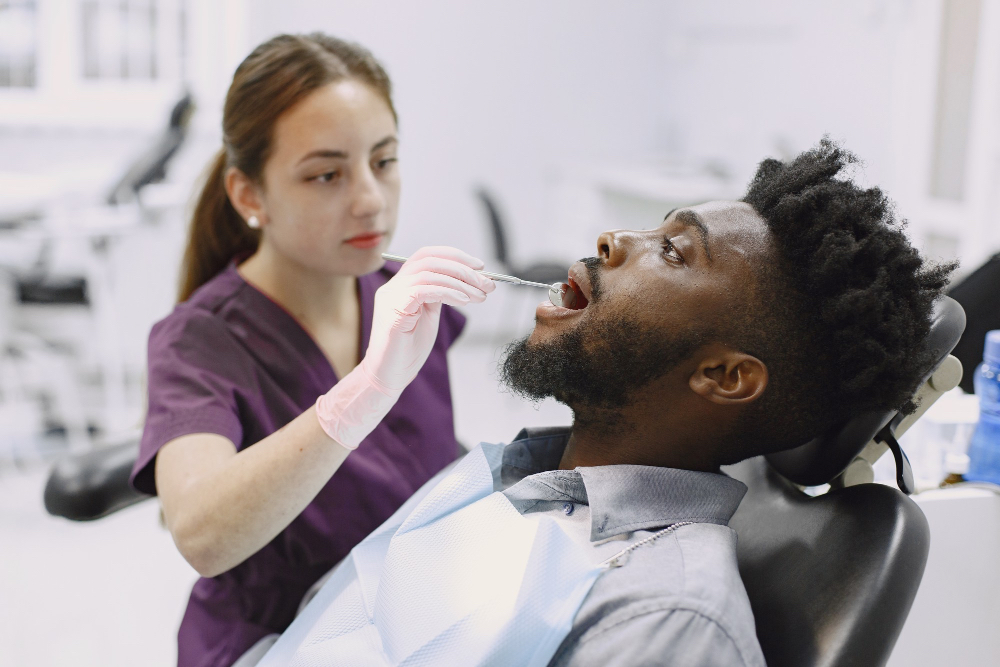Have you ever heard of open bite? Do you know how we correct it? In this article, we’ll answer these two questions and explain this malocclusion in more detail.
What Is Open Bite?
Generally, in dental medicine jargon, we define open bite as a type of malocclusion (in this case, infraclusion) where the upper front teeth and the lower front teeth don’t touch.
This situation leads to a more or less significant space between the teeth. That’s why orthodontists and other professionals in the field speak of “open bite.”
It has to be emphasized that patients that have this type of malocclusion often have difficulty chewing food. Moreover, more pronounced open bites are more visible and generally unattractive. It often leads to significant discomfort and unhappiness for some patients.
Without going into too many details, we can say that there are two types of open bites:
- Posterior open bite
- Anterior open bite
The first occurs when the back teeth, more precisely the molars, don’t touch. Though posterior open bite usually doesn’t show at a glance, it’s just as problematic since it causes some functional problems. The patient will have difficulty chewing food and will feel some discomfort.
The second occurs when the front teeth (often the canines and the incisors) don’t touch. Anterior open bite can cause problems during meals, since mastication won’t work properly and won’t play its role fully. Moreover, it is often unattractive and tends to get worse over time. Generally, patients dealing with this type of malocclusion feel uncomfortable and experience embarrassment daily.
The Orthodontist Can Make a Diagnosis
To determine if open bite is truly the problem, an appointment with your orthodontist in Montreal is necessary. After a visual examination, your orthodontist will take X-rays to make a more complete and precise diagnosis.
Even though it is easily visible, there are various underlying situations that are more difficult to identify. Your orthodontist will be able to identify these situations, unlike the layperson. For example, are we dealing with a simple open bite, or is the open bite concealing another malocclusion? What is the origin of this infraclusion? Is it linked to tongue thrusting or thumb sucking when the patient was young? Is the patient still in his or her growth period?
In short, after asking you these questions and others, the orthodontist will be better able to direct you toward a treatment and tell you the advantages and disadvantages of each solution.

How Do You Correct Open Bite?
The good news about is that there are treatments available. First of all, you might be advised to change your habits. For example, if you tend to suck your thumb, the orthodontist will recommend that you stop doing it.
Moreover, treatments with aligners like Invisalign can be very effective, with or without extraction of premolar teeth.
In fact, orthodontic treatment with transparent aligners is entirely justified and suitable for the treatment of infraclusions (open bite). A treatment using the Invisalign invisible dental alignment technique requires great expertise from your orthodontist. Generally, it’s expected that the duration of treatment can vary between 12 and 24 months, depending on each patient’s particular situation.
Finally, aligners can also be recommended in case of surgical treatment. Again, only an appointment at your orthodontist will make it possible to analyze the situation and determine the possibilities available to you. It’s only after this first visit that you’ll be able to know the solutions offered by your dental professional.
In more complex cases, for example, if we’re talking about a skeletal open bite, which is often due to genetics, your orthodontist might suggest starting with aligners. He might regularly reexamine the situation, during treatment, to determine if surgery is still indicated. In such a scenario, the initial treatment starts with invisible aligners, and the corrective work is evaluated throughout the treatment.
Now that you know what open bite is and that it can be corrected, we suggest that you choose your orthodontist carefully. Dr. Normand Bach, your orthodontist at the heart of Montreal in Le Plateau-Mont-Royal neighbourhood has extensive expertise in the field.
With his experienced team, he will establish an accurate and precise diagnosis, offer you the most appropriate solution and answer all your questions. He will take the time to explain to you the advantages and disadvantages of the suggested treatment, and he will make your life easier throughout your treatment.
Make an appointment today. A highly qualified and professional team awaits you!